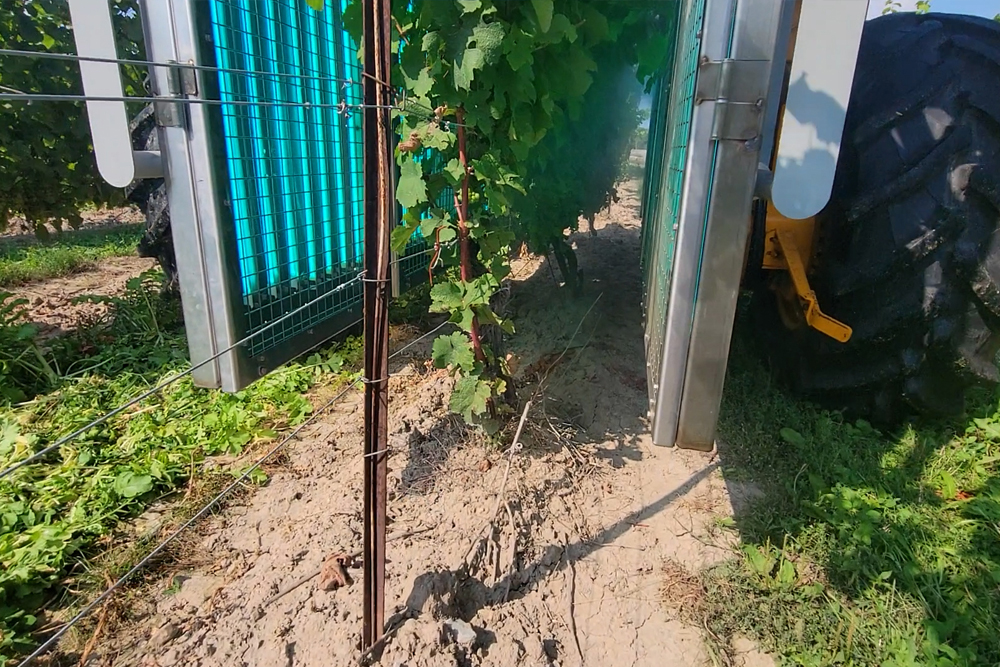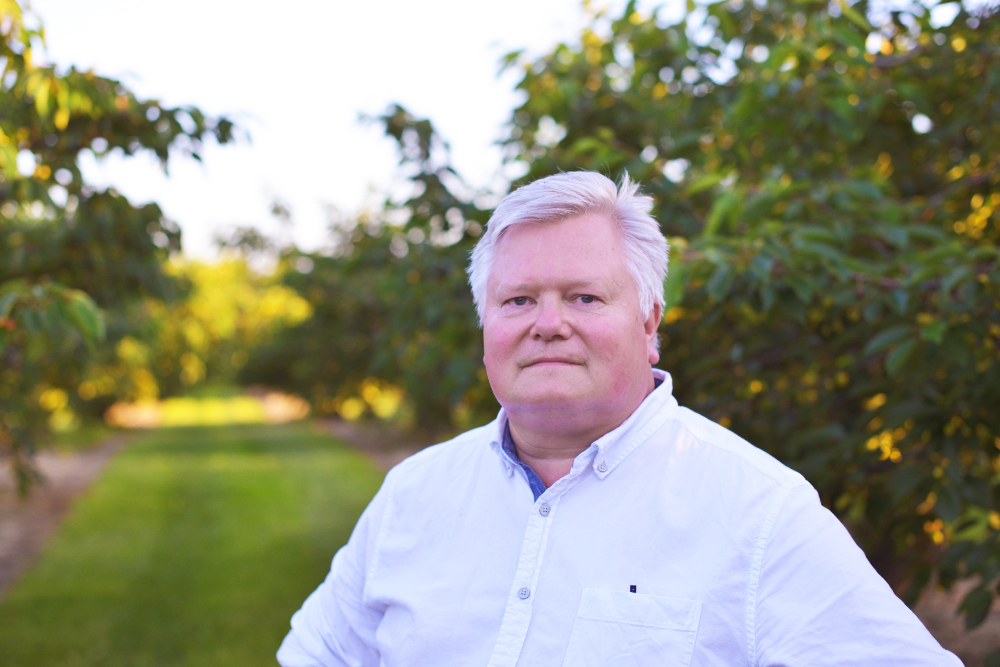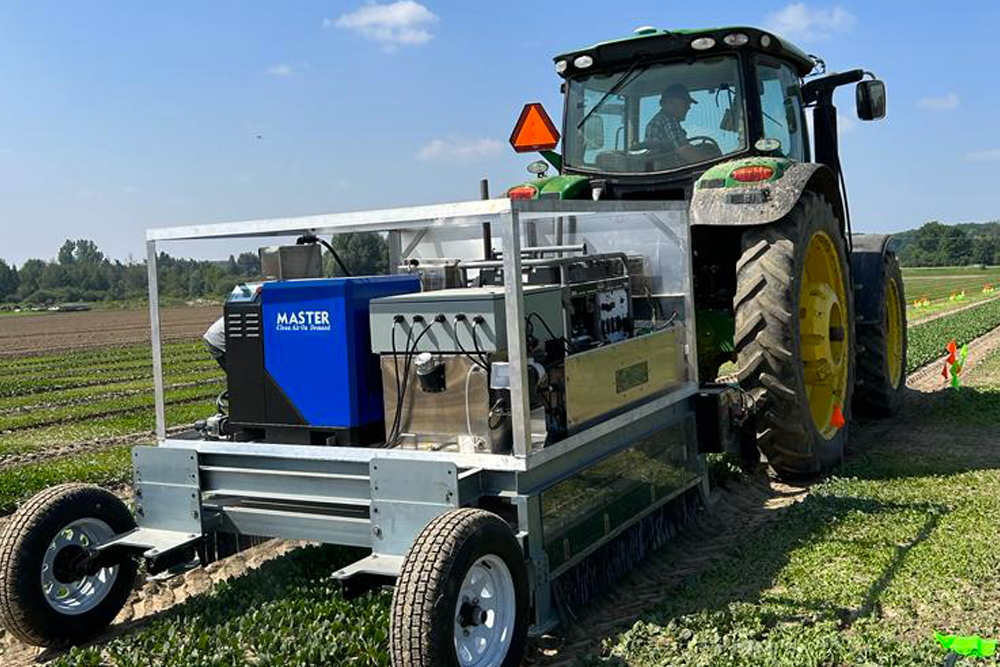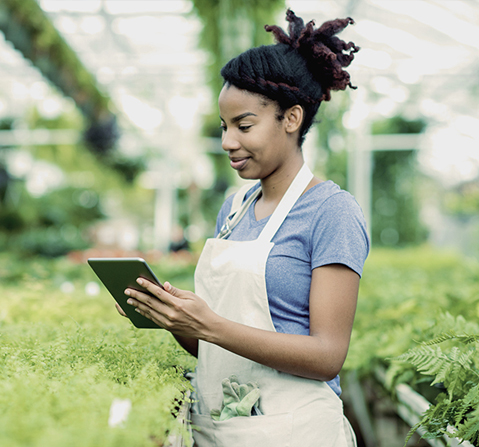Paul Moyer is reducing food waste with a waterless cleaning technology
Has the time come for a new way to “clean” food and rid it of contaminants? Paul Moyer, Co-owner of Clean Works with Court Holding Inc., helped develop a unique waterless food decontamination technology tackling food and water waste at different stages of food production. How did this happen? It all started with caramel apples.
From sweet to sour
Paul Moyer is an Ontario apple grower who specializes in making caramel apples. Even though he is a ninth-generation Canadian farmer, it does not make him immune to challenges. In 2014, a listeria outbreak hit the caramel apple industry, highly affecting their sales even though they weren’t directly touched by the outbreak. Paul had to witness an entire lot of caramel apples being discarded from a retail store. Not only was this frustrating, it also contributed to a financial strain on this local farmer. He was then determined to find a solution to protect his business from such threats in the future.
Going waterless

Paul knew that if he wanted to avoid getting hit by another outbreak, he had to steer away from the typical methods of cleaning fresh produce that use water, which does not kill pathogens such as listeria. Contrary to what we might think, water helps pathogens spread when many fruits are cleaned in the same container. “It's very similar to taking a bath after 10 other people have taken a bath in the same water,” explains Paul.
To stay ahead of the industry, he would have to turn towards new technologies. He reached out to the University of Guelph, renown for being Canada’s premier agricultural school and for its food safety program. Together with Dr. Keith Warner, one of Canada’s top food scientists, they worked towards an innovative solution to remove these dreadful pathogens.
Years of trials and scientific validations through third party research were necessary to ensure that their process would be safe for the food and environment. Finding the right research partners was time consuming and costly, and they also needed early adopters willing to test their technology. Thankfully, they weren’t alone. Their commercial partners were there to help with laboratory and field testing.
Goodbye pathogens
Paul and Dr. Keith Warner developed a waterless solution to clean certain types of produce, proteins (like meat and eggs) and products as well as bins and storage containers. They did this by combining three inputs, hydrogen peroxide mist, ozone gas and UV light, which together produce hydroxyl radicals. These radicals can eliminate harmful microorganisms like pathogens, viruses, mold, and mildew.
Seeing how much food also gets wasted before getting the chance to leave the field inspired the Clean Works’s team to extend the use of their technology to fruits and vegetables that haven’t yet been harvested. They are now testing another similar solution, compatible with farming tools, making it usable right in the field.
Clean Works cleaning solutions aim to attack food waste in many ways: protecting plants against diseases, increasing product shelf life and food safety and reducing residues and wastewater. In terms of sustainable practices, Clean Works has also set up recycling and composting programs, and always sources from local service partners to reduce their carbon footprint.
Starting out in the Niagara Peninsula in Ontario, Canada, this technology is now available globally in seven countries.
For the future, they’ll be expanding the scope of the application to more fruits and vegetables by performing field research with their partners. Their goal is to continue leading the way in the sustainable food landscape by becoming the new standard for cleaning fruits and vegetables. “Food safety is a worldwide problem, and we have a worldwide solution,” says Paul.
Clean Works is a Novel Technologies winner of the 2024 Food Waste Reduction Challenge.




What are foodborne pathogens?
Foodborne pathogens are bacteria, viruses and parasites which can contaminate the food we eat, causing foodborne illness. Contamination of food with pathogens can occur at numerous points in the food production chain such as during production, processing, packaging and distribution. Examples of foodborne pathogens are listeria, E. coli and Salmonella.







